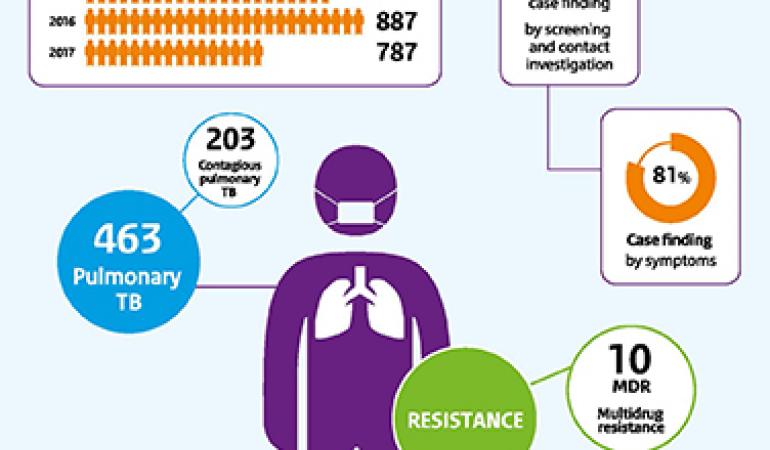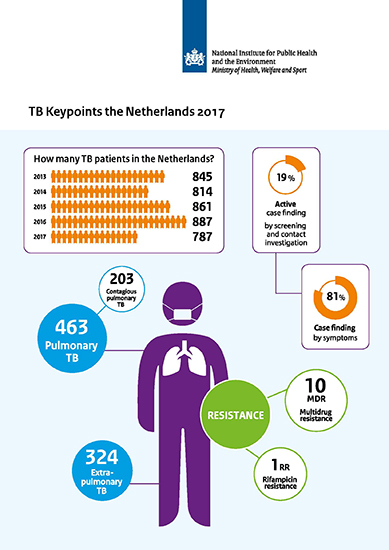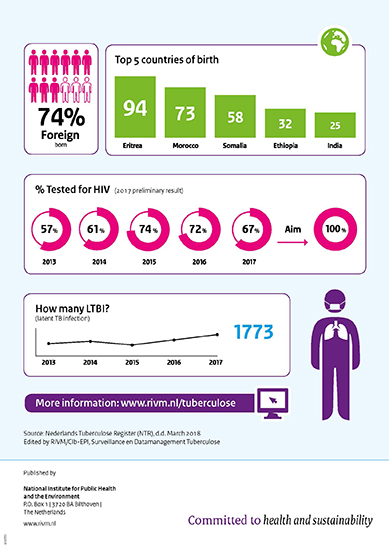
The key figures of the National Institute for Public Health and the Environment (RIVM) show that in 2017, the number of TB patients in the Netherlands fell below 800 TB patients for the first time since the first registration in 1950 (787). That is 11 percent less than in 2016. 463 TB patients had pulmonary tuberculosis, 203 of the most contagious form (open tuberculosis). From the remaining 324 patients, TB presented itself extrapulmonary.
Almost three-quarters of TB patients in the Netherlands were born in countries where tuberculosis is common, such as in Africa and Asia. The treatment of TB consists of a combination of different types of antibiotics. Eleven patients had a severe form of resistance to antibiotics. 1773 persons were reported with a latent tuberculosis infection in 2017. That means that people have been infected by TB bacteria but are not ill from the disease.
What is tuberculosis?
Tuberculosis is a notifiable infectious disease that is caused by a bacterium. People can carry the bacterium for a long time without becoming ill (latent TB infection). Later the disease can still occur. Asylum seekers and immigrants from high TB incidence countries are screened for disease when they enter the Netherlands.
Treatment
Tuberculosis is usually well treatable with antibiotics, but patients need to take their medication for at least six months.
World Tuberculosis Day
On 24 March, World Tuberculosis Day is intended to raise awareness regarding the worldwide spread of tuberculosis and the efforts of eliminating the disease. KNCV Tuberculosis Foundation has issued a new news item on TB in the European region.

